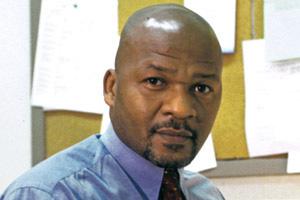Communications
Panel Critiques Racist Stereotypes in Mass Media

Racism exists consciously and unconsciously. Among the worst unconscious purveyors of racism are the news, commercial and entertainment media when they perpetuate stereotypes.
That was the takeaway from an April, 26 panel presentation at American University that was organized by Operation Understanding DC, a Washington, D.C.- based group that seeks to build African American and Jewish community leaders who work to eradicate racism, anti-Semitism and all other forms of discrimination.
Stereotypes serve a specific purpose, according to panelist John C. Watson, an AU journalism professor.
“Stereotypes can be defined as a defense mechanism,” Watson said. They easily allow people “to categorize people and things almost instantly, so you can respond to them instantly.”
These stereotypes are widely seen in the news media, but they usually are not consciously racist choices.
“Most people don’t go into something thinking how can I skew this one way or the other?” said panelist Lynne Perri, managing editor of the Investigative Reporting Workshop at the university. ”We don’t assume bias.”
Nonetheless, it exists, Watson explained.
He showed three generational depictions of “Aunt Jemima,” the smiling black woman seen on breakfast food products. The original depiction from nearly a century ago shows her in racist blackface and a head wrap. Today’s commercial image shows a smiling black woman with stylish hair and string of pearls, which Watson said is progress but still maintains the black “mammy” stereotype.
“It shows a black woman who is happy and jolly and friendly,” he said.
The fourth depiction was from a 21st century news video of a jovial black woman in a head wrap interviewed in the aftermath of a house fire. She utters the meme-inducing line: “Ain’t nobody got time for that.”
Stereotypical portrayals like this, while common, are not indicative of the truth, which places them at odds with the news media’s goal of distributing the truth.
“Journalists must be particularly vigilant because stereotypes are inherently false,” Watson said.
Drawing attention to stereotypes and their existence has forced some news organizations like NPR to reevaluate their coverage of sensitive topics.
“We’re in a constant dialogue with our listeners and our online readers to understand how words are heard,” explained panelist Hannah Bloch, lead digital editor for NPR. “We’re really trying to look at it from all sides and be as empathetic as we can.”
NPR has a full time “standards and practices” editor who considers issues of language and how they are conveyed in stories.
Bloch noted some examples of how increased sensitivity has altered the way NPR covers some issues.
Instead of using the term “illegal aliens,” people moving to the United States from other countries are now always referred to as immigrants, she said, and “illegal” is not part of the terminology.
“We started hearing from readers who said ‘I’m not an illegal person so why would I be referred to as an illegal immigrant,’” Bloch said.
In place of these terms are phrases like “someone has overstayed their visa” or they “entered the country illegally.”
NPR has also adopted this approach for medical and crime reporting, according to Bloch.
The panel presentation was the first in a series of learning institutes planned by OUDC for the benefit of public high school students in the DC area. Student Monique Vaz of Washington and Lee High School introduced the panel discussion which was held in the Media Innovation Lab at the AU School of Communication.
“OUDC brings black and Jewish youth together to create a generation of leaders through dialogue, learning about social justice and equity,” said Yolanda Savage-Narva, executive director of the group.
They use those skills to go out into the community and discuss unconscious bias, racism and empowered privilege, Savage-Narva added.